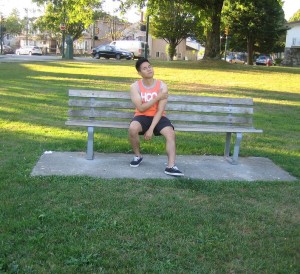Shoulder bursitis is described as an inflammatory issue that affects the bursa or moderating sac of tissue that facilitates motion in the rotator cuff. The joints, muscles and tendons facilitate free movement for the upper arm and shoulder. The usual site where shoulder bursitis develops is under the acromion bone which hugs the glenohumeral joint. An issue arises after one strenuous movement or through overuse of the rotator cuff over time. Always bear in mind that bursitis can cause intense shoulder pain and severely disrupt with the range of motion of the individual during sports or daily activities at home or at work.
https://www.youtube.com/watch?v=4M-b45Y1Xxk
Overuse injuries
Always bear in mind that shoulder bursitis is typically triggered by overusing the acromioclavicular or the glenohumeral joints as well as the neighboring muscles. This can occur while engaging in strenuous overhead lifting, strong athletic movements as well as passive poor posture. The shoulder pain due to bursitis can be worsened by a correlated tendinitis or a torn labrum which is a tear on the protective cartilage in between the bursa and joint.

Overusing the shoulder occurs in certain activities such as carpentry or even among athletes in certain sports. Individuals who have poor upper body posture or poor lifting ergonomics might require medical advice in order to avoid repeating the behavior that damaged the bursa.
Traumatic injuries
Direct trauma to the bursa can trigger an inflammatory response of shoulder bursitis. The bursa can endure a blow from a fall, contact with objects or residual trauma from a dislocation or another violent injury. Any twisting motion, stretch or tear to the neighboring soft tissue can cause the bursa to swell.
Once the subacromial bursa becomes swollen, it limits the space normally reserved for shoulder muscle movement, resulting to pain and diminished range of motion. In case multiple parts of the rotator cuff are involved, a cycle of inflammation and shoulder pain can make it hard to isolate and diagnose shoulder bursitis.
Arthritis and infection
Other conditions that can lead to a localized inflammatory response can compress on the bursa and even instigate the development of bursitis. Always bear in mind that arthritis can be a main source of shoulder pain. With this in mind, rheumatoid arthritis, osteoarthritis or monoarthritis that is linked with gout might require proper assessment by a doctor in order to effectively manage bursitis.
Even though infections are less likely to occur in the subacromial bursa of the rotator cuff than the bursa in the knee or elbow, septic bursitis is possible. Always bear in mind that the infectious cause should be determined and dealt with in order to fully resolve the bursitis.
